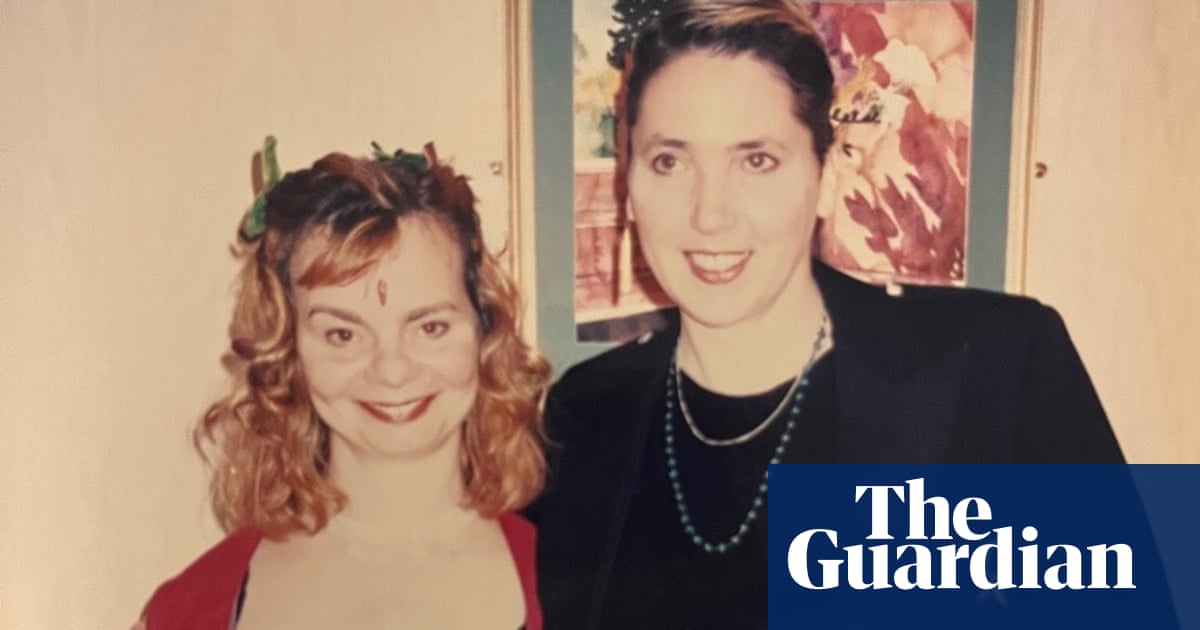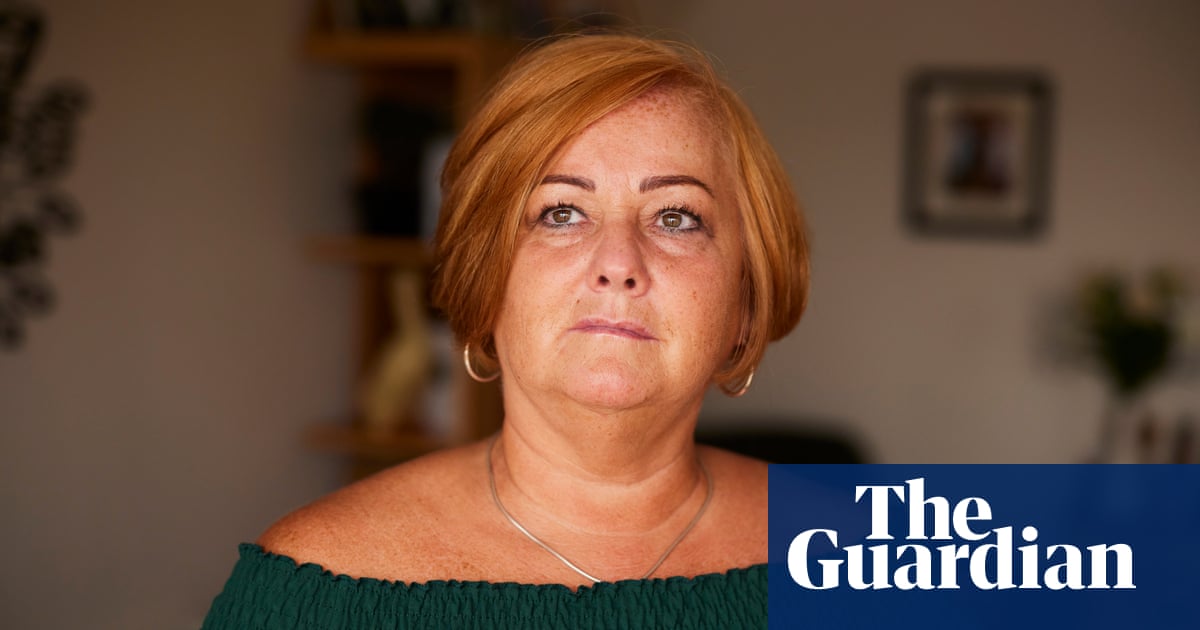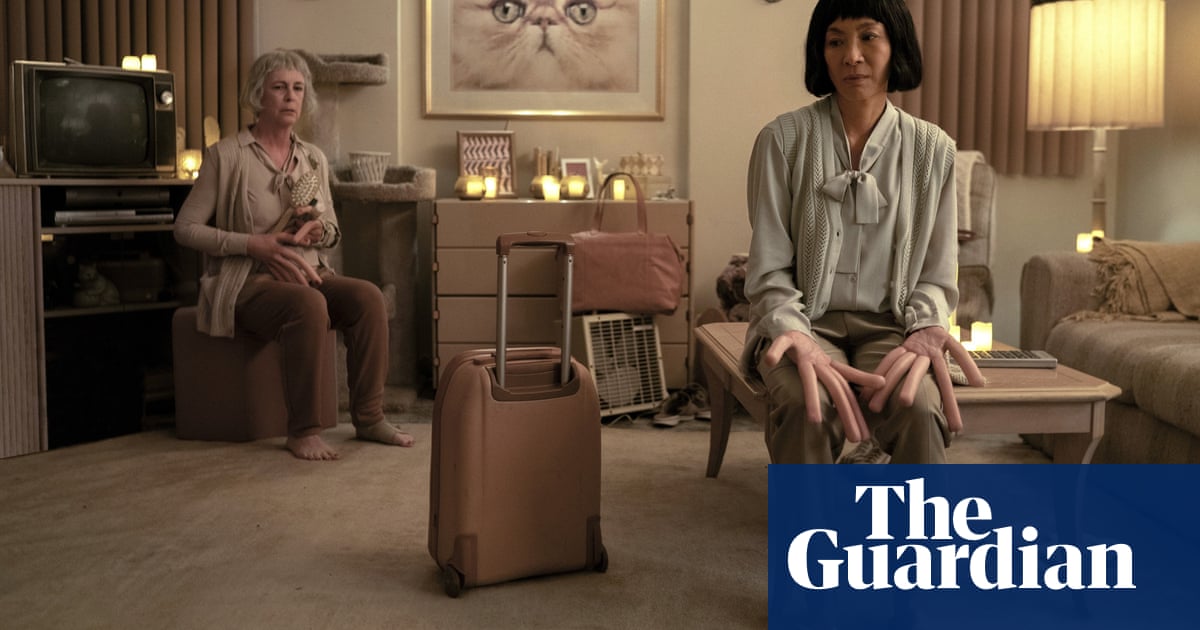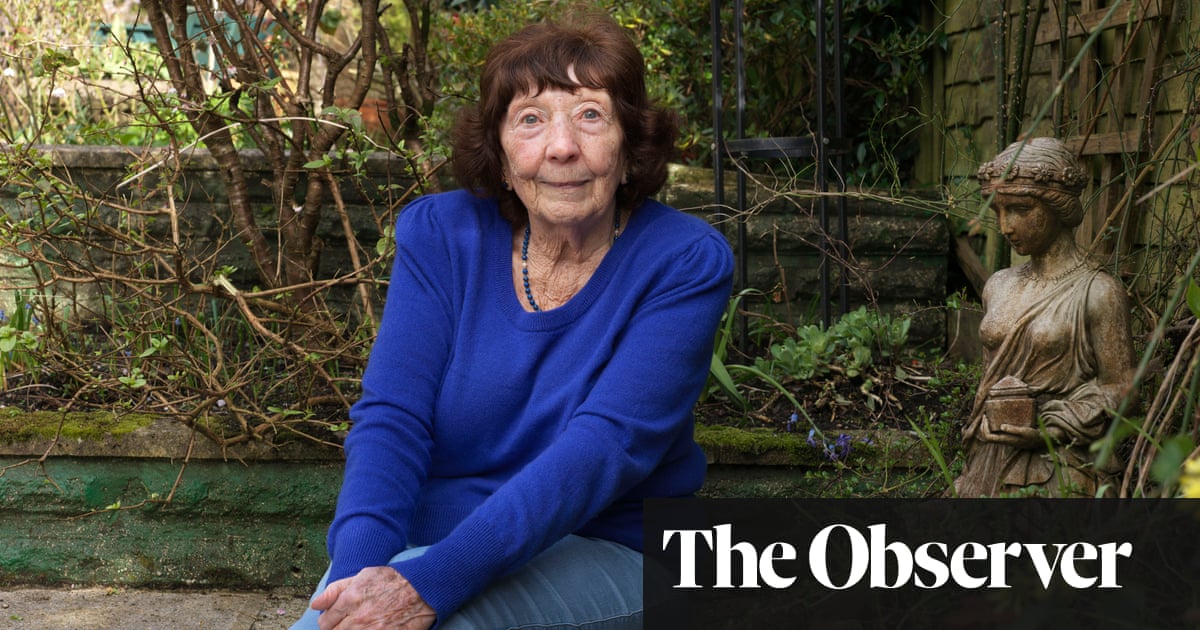
hristina Hendricks appears on our video call with the most dramatic backdrop. Art deco gold peacocks bedeck a black wall, making her look, as she has so often in her career, a bit too good to be human. Perfectly poised, perfectly framed, perfectly lit, she is more like a dreamy vision of what humans look like. “I, erm, like your wall,” I say, pointlessly. She flashes a smile, as if to say: “Obviously.”
We are here primarily to discuss the comedy-drama series Good Girls, the fourth season of which will resume in the US this month after a midseason break. The elevator pitch would be Breaking Bad for girls: three suburban women, each hovering on the edge of bankruptcy, unite to embark on a life of cack-handed crime, only to discover they are good at it. The ensemble – Hendricks, Mae Whitman, who plays her sister, and Retta, their friend – works strikingly well, their pacey comic rapport instilling a sense of perpetual motion. You just can’t imagine Good Girls ending. Every time a plot line seems to be reaching its climax, something worse – and funnier – happens.
“It’s funny you say that, because originally, when I read the pilot script, I thought: ‘I love this, but I can’t imagine this being more than one episode,’” says Hendricks. “It felt like it finished itself.” She is unsentimental about it. Hendricks wasn’t looking for a new show – “I was happy doing films, taking my time” – but went into it with her eyes open. It is a network drama, for NBC – it is shown on Netflix in the UK – so producers are always aware that “it’s going into every house in the US on a Thursday or a Sunday and a family is watching it. They’re much more careful about numbers and advertisers and people being offended or not getting it. A cable show is much more: ‘We trust this creator – they’re a visionary.’”
It has a conventional tone – however dark the material, it is handled very lightly. Yet you can’t help but notice some hard-boiled social commentary from the off – if it weren’t for the bracingly callous US health system, the generation of wage-stagnation casualties and the patriarchy, none of the characters would have gone anywhere near a supermarket heist. More than Breaking Bad, it reminds me of Roseanne and the golden age of US mainstream comedy, when you could be poor on TV without that being a breach of good taste.
The 46-year-old has been a household name for almost 15 years, thanks to Mad Men. She was born in Tennessee, where her mother was a psychologist and her father worked for the Forest Service, and educated in Oregon and then Idaho. She didn’t have time for formal acting training; by the time she was 18, her modelling career had taken off. Later, when she had a manager, she took acting lessons: “I did that for almost a year and a half and put auditions on ice. Then I was watching a film – I don’t even remember what film it was or who was in it – and I thought: ‘I’m ready. I can do this.’” She has the most insistent work ethic; as she describes her life’s trajectory, she notes diligently the jobs she had while she was at high school, at a hair salon and a menswear shop.
In 2007, she appeared as Joan Holloway in Mad Men. She played the role for the next eight years, her character growing around the depth she brought to it, until by season seven she was almost the central part. In the early 2010s, Hendricks was talked about constantly, although she says the original focal points of obsession were the male characters: “Men started dressing like Don Draper and Roger Sterling. Suits came back in, skinny ties came back in. It took three to four seasons and then all of a sudden people wanted us [the female stars] on magazines. We were like: ‘This is strange – we’ve been doing this for a while.’”
Hendricks, along with January Jones, who played Betty Draper, came to represent so much. There was a great deal of rumination on their physicality, Jones as elegant as an afghan hound, Hendricks like the pin-up painted on the side of a bomber. What did it mean, people asked, that in the middle of the 20th century there were multiple ideals of the female form, whereas in the 21st century there was only one? How did that complicate the perception of gender equality as a steady march towards the light? Thousands of column inches went on that question – but, from the actor’s perspective, it was an annoying distraction. “There certainly was a time when we were very critically acclaimed, and getting a lot of attention for our very good work and our very hard work, and everyone just wanted to ask me about my bra again. There are only two sentences to say about a bra,” she says.
The signal impression the show left was of an ensemble at the peak of its creativity: actors, writers and the creator, Matthew Weiner, working in almost telepathic unison. It won the Emmy for outstanding drama series four times in a row, but the more notable year was 2012, when it was nominated for 17 Emmys (and didn’t win any of them). The take-home was: everyone involved with this is absolutely brilliant.
That harmonious picture was blurred two years after the show ended, when one of the former writers, Kater Gordon, accused Weiner of sexual harassment. Marti Noxon, a consulting producer on Mad Men, concurred that Weiner had created a toxic environment and said that he was an “‘emotional terrorist’ who will badger, seduce and even tantrum in an attempt to get his needs met”.
Hendricks takes this head on, in a considered, straightforward manner. “My relationship with Matt was in no way toxic,” she says. “I don’t discount anyone’s experience if I wasn’t there to see it, but that wasn’t my experience. Was he a perfectionist, was he tough, did he expect a lot? Yes. And he would say that in a second. We were hard on each other.”
It is impossible, from this distance, to adjudicate on Weiner’s character, but Hendricks’s response reveals something of hers. The easiest response in this situation, and the one 90% of actors give, is: “No comment.” Hendricks is always collected, never evasive, doesn’t gabble. She reminds me powerfully of Joan Holloway – and I am sorry to say it, because she insists throughout: “I’m an actress. I am completely not Joan. Not in any way. I wish I was more like Joan.”
I wonder if, while we were all fixating on Joan’s bras and whether or not, in the asinine words of Lynne Featherstone, the UK’s equalities minister in 2010, she represented a “curvy role model”, the audience was responding to Joan’s deeper life lesson – that self-possession is 9/10ths of the law.
What Hendricks emphatically doesn’t do is minimise the existence of sexism and sexual harassment in the industry: “Boy, do you think anyone in the entertainment industry comes out unscathed and not objectified? I don’t know one musician or one model or one actor who has escaped that. I have had moments – not on Mad Men; on other things – where people have tried to take advantage of me, use my body in a way I wasn’t comfortable with, persuade me or coerce me or professionally shame me: ‘If you took your work seriously, you would do this …’
“Maybe it was my modelling background, but I knew to immediately get on the phone and go: ‘Uh oh, trouble,’” she says. “That’s where it’s very much a job. We need to talk to the producers and handle this professionally.”
Yet, at the same time, she is defensive of her industry. “It gets a lot of attention because people know who we are. I’m sure there’s a casting couch at the bank down the street, I’m sure the same thing happens in management consultancy, but people don’t know who the management consultants are.”
Modelling always sounds like a harsh environment – predatory photographers vying with stringent agents to give everyone a complex about their thighs and stop them eating carbs. But that is not how Hendricks describes it at all. Her career sounds like one out of an 80s Judy annual: innocent and hearty, good for pin money and travel opportunities. “I think I was lucky – I didn’t start when I was 14. When I was about 18 or 19, I went to Japan for the first time, I went to Italy. We’d be lots of girls, sharing a house, and I sort of became the den mother. I’d make everyone egg salad sandwiches and greek salads, going into this mother hen role.”
That is what they say about being taken hostage: if you want to survive, choose someone to look after. “Oh,” she says, coolly. “I wouldn’t consider being a model as being a hostage.”
She was only ever medium-successful, she insists – an “unusual and quirky” hire, rather than the slam-dunk face of everything. About as far as it went was that she never had to get another job to supplement her income. Probably the most famous image of that era in which she was involved was the poster for American Beauty. Two models were in the frame, so they took a photo of the stomach and the hands of each. In the end, they used Hendricks’s hand on the other model’s stomach. It sounds like a clunky metaphor, but it is true.
During this period, she moved to London with a friend, for the hell of it, living in a flat on Gloucester Road, “surviving on cider and hummus”. It is a glimpse of the oddball she says she was growing up, the outsider as whom she is rarely cast. This has been the story of her CV. “Early on in my career, I would get auditions and I would call my manager and say: ‘I would never cast me in this – she’s a cheerleader, she’s a bimbo. Can I audition for the other one, the weird doctor?’ And they’d be like: ‘No, they saw your picture.’ And I started realising that people didn’t see the weird, goofy me that I saw.”
She made the jump from modelling to acting via adverts, with what looks like fairytale ease. In fact, it was “a lot of pounding the pavement and showing up for auditions and getting rejected – and learning, as a young woman, to not take that personally”. By the late 90s, she was the face of ultimate female confidence, the woman who drinks Johnnie Walker and doesn’t need a chauffeur (these are two ads, not one for drink-driving). “I always thought of modelling as freeze-frame acting. It felt like a scene, and I still consider it that way. There are so many technical things that I think people don’t notice. They see you playing dress-up.”
From the commercials, she learned “how to hit a mark, how to memorise a line”, but acting wasn’t novel. She had been doing community theatre since the age of 10, and grew up expecting an alternative life, supplementing an art-house existence any which way. She never amplifies her creative urges. She is much happier talking about professionalism and graft, but that is strategic more than anything else. “I am incredibly emotional and I take things very personally. But I’ve learned to be a little bit of a politician and a little bit of a producer along the way. As a female actor, the easy go-to is: ‘She was emotional, she was hysterical.’ It can be a million other people’s fault, but it’s easy to point your finger at an emotional artist. So, I realised: if I’m going to be taken seriously, I need to have professional perspective and I can cry about it to my friends later.”
Yet she cares deeply about creativity, as is clear when she talks about Mad Men. “It may eclipse anything I ever did. And, if it does, it was a good one and I’m proud of it,” she says. “I got to bring who I was as a woman. I think I learned some of how to be a woman from Joan. No one would give a shit about me if it wasn’t for that show. I’d still be doing good work, but no one would have found me. If that’s the best thing I ever do, it was pretty good.”












